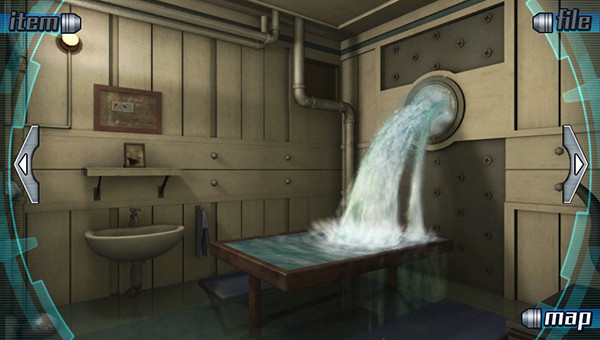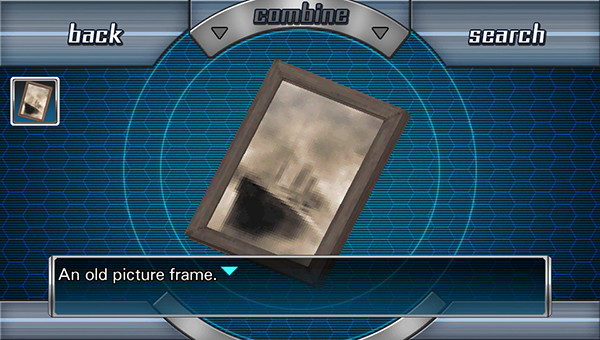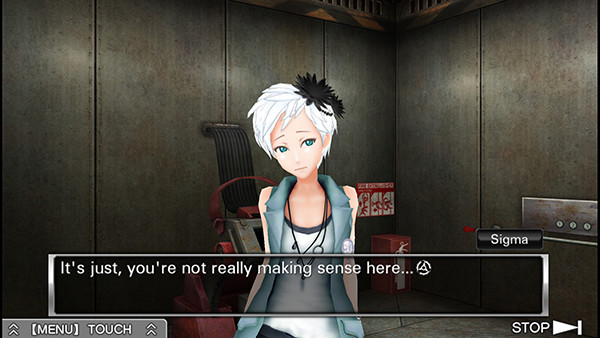PC Impressions: Zero Escape: The Nonary Games
by Dustin Bailey,The Zero Escape games saw an inauspicious start in 2009 with Nine Hours, Nine Persons, Nine Doors—otherwise known as 999—a mystery slash sci-fi visual novel for the original DS. Coming after a wave of successful adventure game-meets-visual novel hybrids on DS, ranging from Phoenix Wright to Hotel Dusk, 999 became a cult hit, spawning a series that culminated in 2016's Zero Time Dilemma. By now, you've probably heard Zero Escape fans talking about how cool the series is, and publisher Spike Chunsoft is working to ensure that word of mouth has someplace to go with Zero Escape: The Nonary Games, a compilation of the first two titles in the series.
The basic setup of 999 sees you working along with eight other people in the so-called Nonary Games. You're trapped aboard a ship and challenged to escape by overcoming all sorts of traps, tricks, and challenges set forth by a mysterious masked figure called “Zero.” The stakes are life and death, and you probably already know how this goes—the nine characters of the game find themselves forming shifting alliances, and the nature of the game as well as its players slowly reveals itself over the course of the adventure.

There's a lot more dialog and a lot less gameplay here than in the rest of the DS nouveau adventure wave, but there are still puzzles to be solved. It's mostly standard point-and-click inventory combinations, though you'll often be reading maps and notes, and playing specific little minigames to proceed.
That's only half the story, though. Like many VNs, 999 features multiple endings, but the way you achieve those endings, what they entail, and the way they're presented in the game combine in a way that you don't typically see. One ending leaves the story feeling unfinished—another might complete it, but leaves you totally unsatisfied. You have to make your way to the conclusion multiple times to reach the true ending, and the paths of all your false starts intertwine in some tremendously satisfying ways.
The problem with all that is that you've got to start over from the very beginning each time, skip through all the dialog you've already scene, and slowly pick apart and deduce which snaking paths lead to new ends without much of a clue on what choices lead where. That means that actually uncovering the interesting details is repetitive, and getting to the final “true” ending is an arduous, FAQ-forcing journey. Or rather, that's how it was in the original release.

The Nonary Games edition of 999 here offers its sequels' flow chart, allowing you to choose specific moments to hop back to and see where the story branches. After completing the game once, you can even see keys and locks representing the path to the proper ending, which makes it so much easier—and less frustrating—to unravel the bigger points of the mystery.
Adding the flow chart is the most meaningful addition to 999, but certainly not the only improvement. There's also improved character art, HD backgrounds—properly remade for widescreen, not cropped or stretched—higher quality music, and fixes for typos and other small errors.
It's also now got full voice acting, similar to Virtue's Last Reward. It's very good, with the cast sounding perfectly fit for their largely retrofitted roles. Special shout out to the voice effects on Zero, who now sounds more or less exactly like Kylo Ren. The only issue that works against the voice acting is the game's famously lengthy expository dialog scenes, which sound even more awkward with humans reading them. If you're not a fan of the English VAs, or just prefer Japanese, the dual audio options have you covered.

999 originally made extensive use of the DS hardware in telling its story, using the top screen to show in-the-moment action, while using the bottom screen for a full, third-person narration of the story. That might not sound like a big deal, but those who've played the game know that this is very significant to the way the story is told. The solution for this remake is to let you swap between the two screens—Novel and Adventure—at the tap of a button. It's not a truly ideal way to deal with the problem, but it seems a good enough solution to adapt the game for a single-screen format.
I've focused mainly on 999 because that's where the bulk of the updates for this collection come in. Virtue's Last Reward is basically a straight port of the original game, with little new beyond its ability to run at higher resolutions. Not too high, though—the PC version of the game is capped at 1080p. That's hardly an issue for a title like this, which isn't hampered by lower resolutions, but you might be disappointed if you've got one of those super hot ultra-high-rez monitors.

Both games offer support for keyboard and mouse as well as gamepad, and though you can switch between input methods on the fly in-game you have to relaunch to alter button prompts. Navigating menus feels more natural on gamepad, but mouse controls offer a far better way to navigate the originally touch-based escape sequences. Both control methods are totally acceptable ways to control the game, however.
Even with some minor concerns over the way the dual-screen antics of 999 are adapted, the Nonary Games collection is now pretty much the definitive way to see the first two parts of the Zero Escape series. 999's new voice acting is great, and the addition of the flow chart essentially erases the game's biggest criticism. The Virtue's Last Reward port is less impressive in terms of new features, but there was far less to add. If you're looking to get into the series, or looking for a reason to replay it, this is absolutely the version to try.
discuss this in the forum (9 posts) |
this article has been modified since it was originally posted; see change history